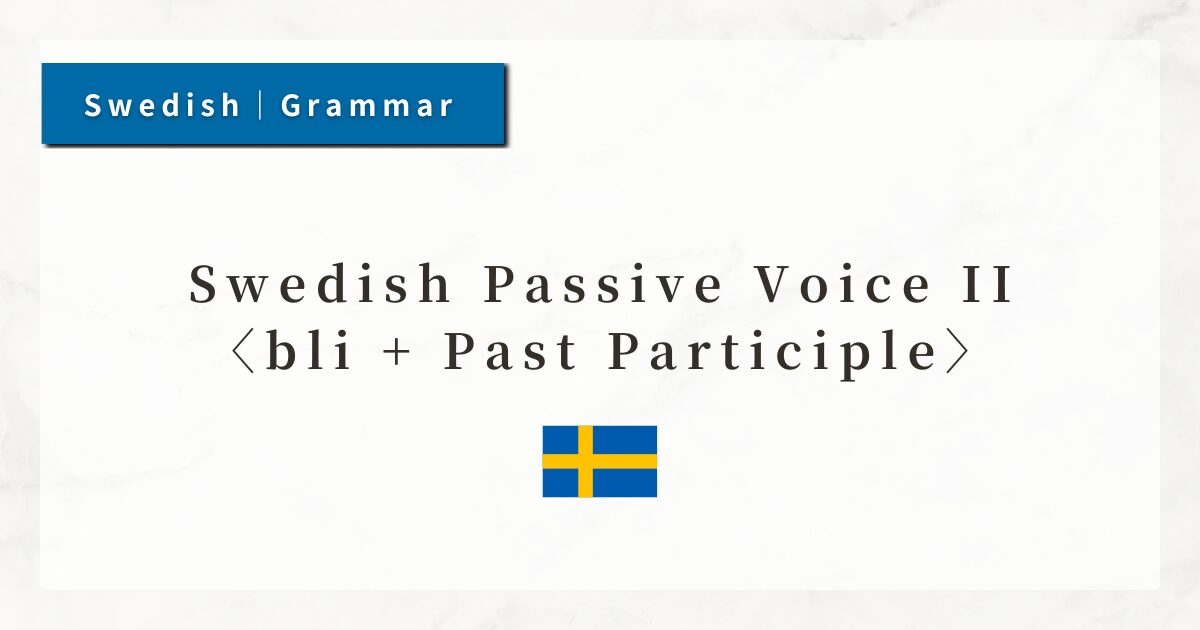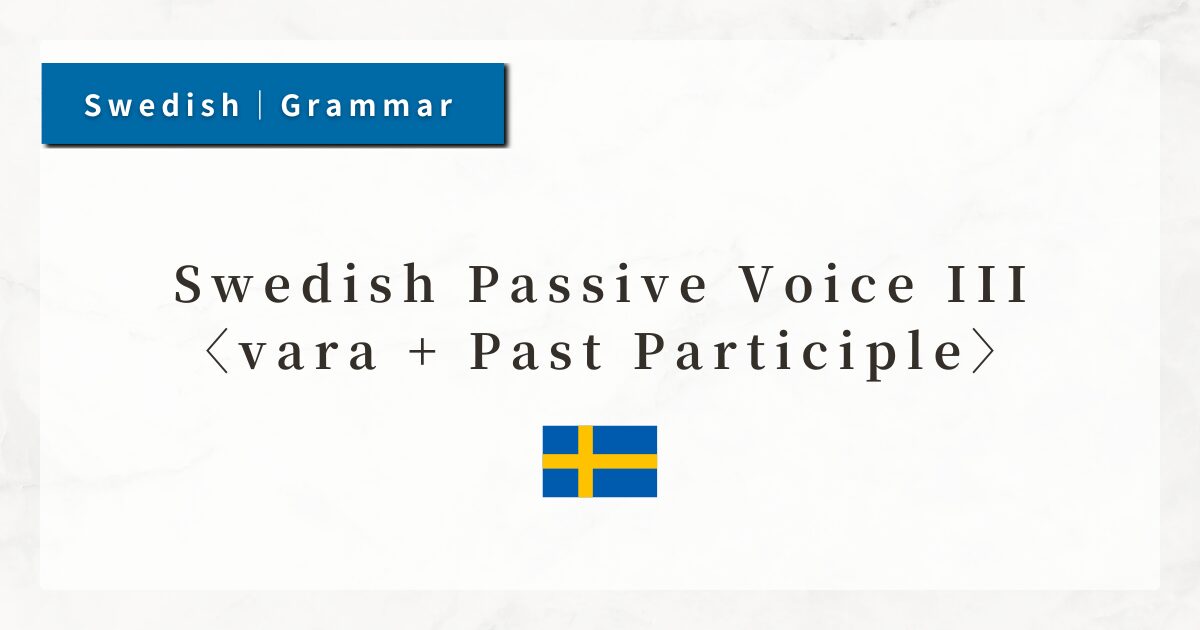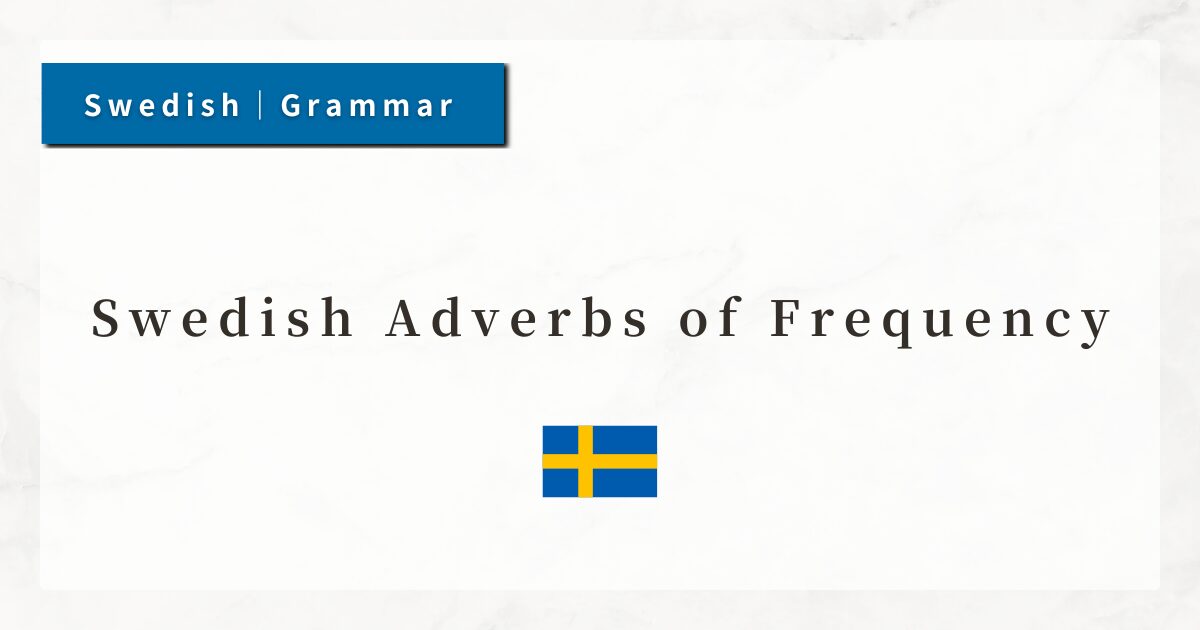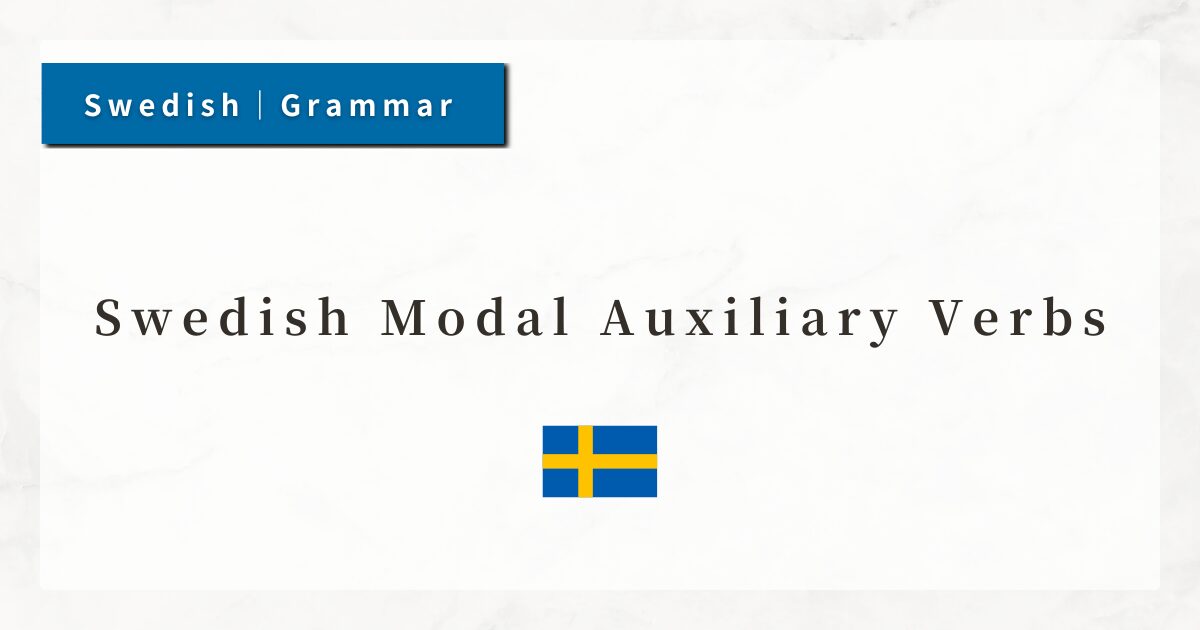#51 Swedish Passive Voice II|The Usage of bli + Past Participle

In Swedish, there are several ways to express the passive voice.
Among them, the construction “bli + past participle” is used when emphasizing that an action is in progress or highlighting the process of change.
In this lesson, I explain how the passive voice with “bli + past participle” works, along with its usage and conjugation patterns.
1. Basic Structure of the Passive Voice
One type of Swedish passive voice is formed with “bli + past participle.”
Bli is a verb meaning “to become.” The past participle is derived from a verb and expresses a passive meaning such as “being done” or “having been done.”
By combining these two, we get a passive construction equivalent to “to be/get done.”
- Dörren blev stängd.
(The door was closed.) - Han blev vald till president.
(He was elected president.)
This construction is close in meaning to the English “get + past participle.”
However, note that in Swedish, the past participle here is used only for passive voice.
2. Difference from the -s Passive
Another common way to form the passive voice in Swedish is to add -s to the verb.
The difference between the two is as follows:
- -s passive
→ used for general facts or habitual actions. - bli + past participle
→ used for momentary events or when emphasizing the process of change.
Examples:
- -s passive:
Dörren stängs kl. 18.
(The door is closed at 6 p.m.)
→ Neutral fact or habitual action - bli + past participle:
Dörren blev stängd av vakten.
(The door was closed by the guard.)
→ Refers to a specific event or the process itself
3. Conjugation of bli
Bli is an irregular verb, and its passive construction changes according to tense.
| Tense | Form of bli | Example |
|---|---|---|
| Present | blir | Fönstret blir öppnat. (The window is being opened.) |
| Past | blev | Han blev arresterad igår. (He was arrested yesterday.) |
| Present perfect | har blivit | Hon har blivit intervjuad. (She has been interviewed.) |
| Future | ska bli | Han ska bli vald nästa år. (He will be elected next year.) |
4. Patterns for Forming the Past Participle
The Swedish passive participle is formed differently depending on the verb group:
| Verb Group | Rule | Example |
|---|---|---|
| 1st conjugation (stem = infinitive) | stem + -d | tala → talad (spoken) |
| 2nd conjugation a | stem + -d | stänga → stängd (closed) |
| 2nd conjugation b | stem + -t | läsa → läst (read) |
| 3rd conjugation (stem = infinitive) | stem + -dd | bo → bodd (inhabited) |
| 4th conjugation (irregular) | various endings (-en, -et, -na) | skriva → skriven (written) |
5. Adjectival Use of the Past Participle
Past participles can also be used like adjectives to modify nouns.
In this case, the participle changes its ending according to the gender and number of the noun.
| Noun Gender/Number | Ending | Example |
|---|---|---|
| Common gender singular | unchanged | en stängd dörr (a closed door) |
| Neuter singular | -t / -tt | ett stängt fönster (a closed window) |
| 2nd conjugation b (common gender) | also -t | ett läst brev (a read letter) |
| Plural | -e (1st conj.) / -a (others) | stängda dörrar (closed doors) |
| 4th conjugation | -en / -et / -na | ett skrivet brev (a written letter) |
6. Summary
- The construction “bli + past participle” expresses passive voice with a focus on the moment of the event or the process of change.
- The verb bli changes with tense (blir, blev, har blivit, ska bli).
- The past participle is formed differently depending on the verb group.
- Past participles can also function as adjectives, agreeing in gender and number with the noun they modify.




